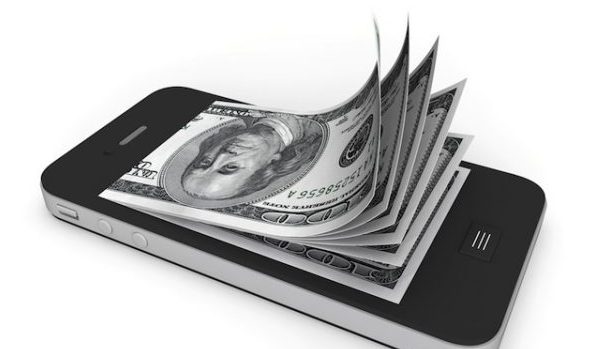
WiFi Advertising: Cultivating Happy Customers
Walk into a good coffee shop, hotel or restaurant, and chances are, you are able to login to a WiFi network – paid or free. Whether you are surfing social media sites, local news, sports scores or working, access to wireless networks anytime – anywhere is expected. As people are using mobile technology more and more, wireless Internet has become “the” enabling force for the transmittance of all forms of media. More than 90% of consumers have their mobile phone within arm’s reach at any given time. In the United States alone, more 56% of adults have a smartphone, creating huge opportunities to deliver targeted and relevant messages right here -right now. The sheer number of mobile devices continues to grow, as more consumers buy smartphones, tablet PCs and other mobile devices. The market for mobile devices is expected to reach 2.6 billion units worldwide by 2016.
The growing availability of WiFi enables new technologies to help companies reach customers – and to help these customers discover sales, deals, discounts and new brands. Companies of all types now have the ability to reach their customers via multiple platforms – with targeted, relevant advertising. WiFi advertising not only fuels brand loyalty, it also helps to offset the cost of a WiFi network. WiFi ads can generate revenue for all types of businesses – from hotels and resorts to retail stores and auto dealers – turning the most requested amenity into a profitable medium. And just in time.
“Gartner estimates that worldwide mobile advertising revenue, excluding advertising delivered in connection with search requests and maps, will grow from $1.8 billion in 2011 to approximately $13.5 billion in 2015, reflecting a compounded annual growth rate of 65%.”
A new report finds mobile advertising revenues jumped 83% to $8.9 billion worldwide in 2012. The report by U.S. Interactive Advertising Bureau, IAB Europe and research firm IHS, shows growth occurred in all regions, but North America, and Western Europe saw the strongest acceleration implementations.
So, how can companies take advantage of this new medium? And how does it work?
How it Works
One of the newest technologies to emerge that will fuel the rapid growth of WiFi advertising is Hotspot 2.0. What Hotspot 2.0 (or Passpoint™) does is create an interoperable WiFi authentication and handoff technology whose primary aim is to simplify and automate access to all public WiFi networks. Any of the WiFi hotspots that are connected to Hotspot 2.0 will allow customers to connect without entering in any login or billing information – a seamless transition from one WiFi signal to another.
The program supports Subscriber Identity Module (SIM) based authentication, the same technology that cellular networks currently use to grant users handoffs between cell sites; meaning that carriers can forge WiFi roaming agreements with one another. This could, for instance, give Verizon subscribers access to T-Mobile hotspots without having to enter in any information or having to connect manually to different networks. Roaming partners can include public venues, enterprises, and many other entities, and can be accomplished with smartphones, or the WiFi-only devices like tablets and laptops. It’s important to keep in mind, the control of hotspots by businesses looking to harness the expanding versatility of Hotspot 2.0, is just the very beginning. When companies advertise, it helps offset the cost for the WiFi provider of equipment and maintenance. Places like airports, hotels, conference centers and retail locations can offer ad space on their portal pages and in their search results to help pay for terrific WiFi access. This not only helps the WiFi provider keep costs low, it also helps local business promote deals that may benefit the consumers – ensuring the ads on the WiFi are local and relevant.
Adding content to web pages or portals is one way that companies can take advantage of WiFi ads. For example, Starbucks recently added this layer to their shops around the country. When a customer accesses the WiFi network in a Starbucks location, the horizontal banner typically shown on the connection page will be reserved for Starbucks house ads while other brands can run adjoining spots in standard 300 x 250 pixel boxes. Beyond that, brands could run 30-second-long videos after mobile users connect that they will be able to skip after 15 seconds, and that result in a call to action like a link to a retailer’s promotion. Users continue on to the company’s branded portal home page that presents people with articles to read, apps, and music.
Brands can target their ads by location, device (including smartphones and tablets) and day of the week/time of day. In addition, this type of technology can also be used to collect data on customers that have, say, a rewards card. The wireless network can be configured to automatically collect data on what type of food the person ordered, and offer discounts based on that behavior – ensuring customers are getting relevant offers that they want – keeping them coming back for more.
WiFi isn’t solely a bandwidth technology; it holds within itself the makings of new ways to reach consumers wherever they are. By treating WiFi as a platform, your business can unlock new ways to advertise, generate revenue, and stay ahead of the curve.
Deep Blue is committed to ensuring that its’ customers have the latest information to make accurate and knowledgeable decisions on the installation, usage and application of their WiFi system. Incorporating the newest trends and technologies into an existing or new WiFi system will be a key factor of success as Internet access and ease of use become increasingly important to consumers.
